Bayeux is one of those small cities (some 14,000 inhabitants) you can’t really categorise; it’s not a fantastic tourist-worthy city (like Mont St. Michel) but neither is it a city to ignore. One of its major highlights, and also international recognised reputation, is the world famous Bayeux tapestry. But the city is more than that.
The city is very old, dating back to 1st century BC when it started as a Roman settlement. Before that time the area was inhabited by the Celts. The city, although the first city to be liberated by the Allies during World War II, was spared most of the bombardments that other Normandy cities suffered. It is therefore very much intact the way it used to be in the Middle Ages.

TIP: When arriving to Bayeux by car, best is to park your car in the large car park close to the tapestry museum. It’s next to impossible to park in the streets.
Once you’ve arrived at the city centre, you are greeted with a small river, the Aure. It’s a river you’ll be seeing a lot, since it snakes through the city.
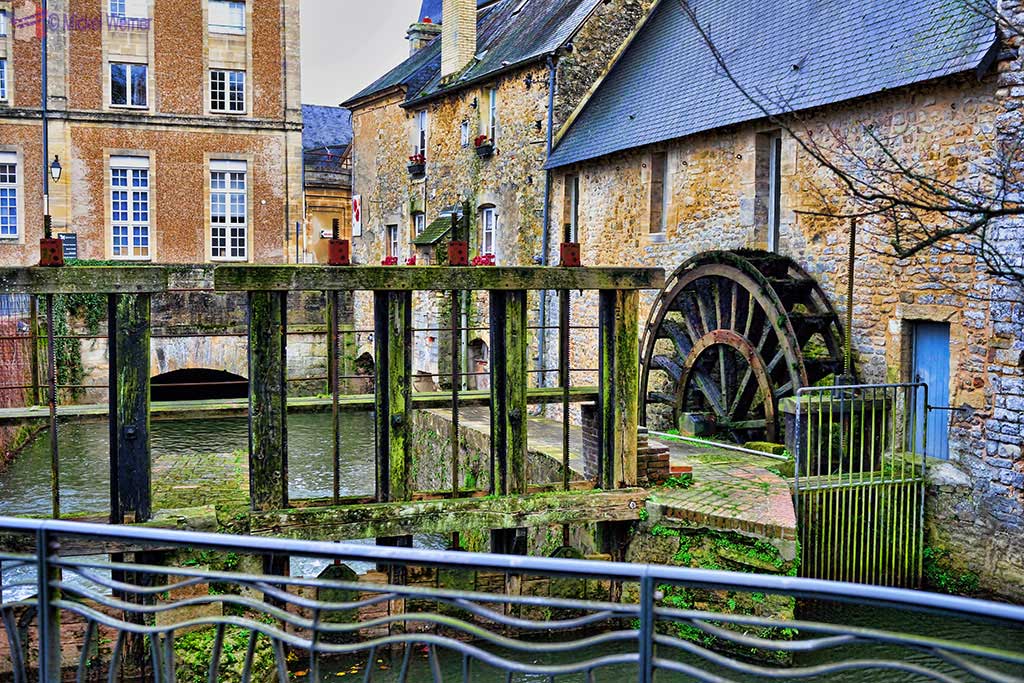
As you would expect, the river also hosts several scenic restaurants:
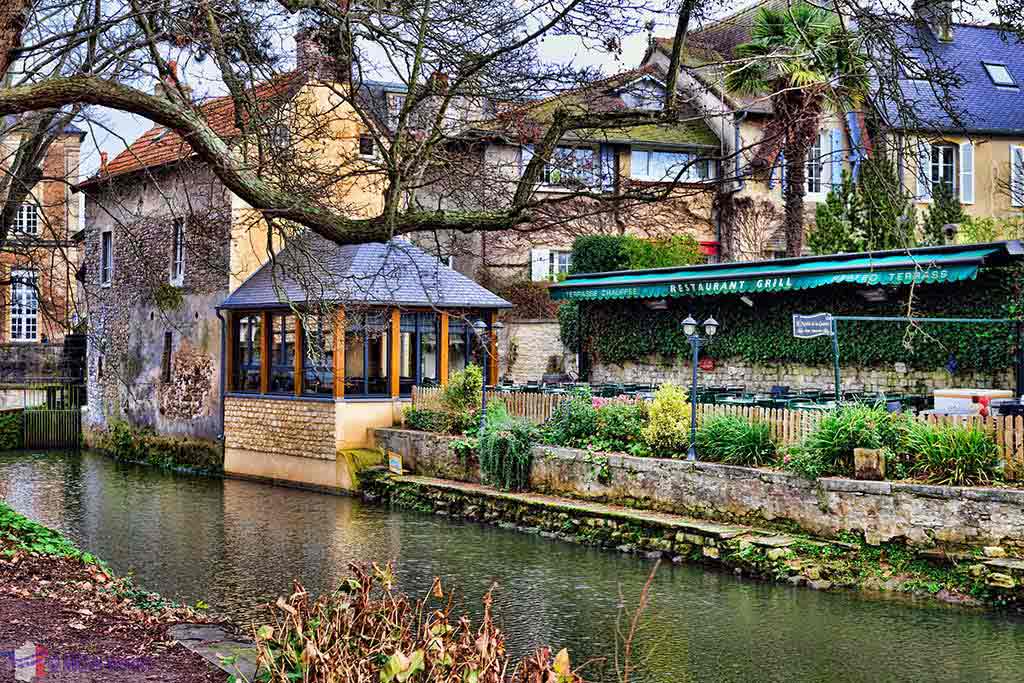
The Tapestry Museum Environment
Once on the way to the famous tapestry, you’ll find several “older” (but not “Middle Age” old) buildings next to the tapestry museum.
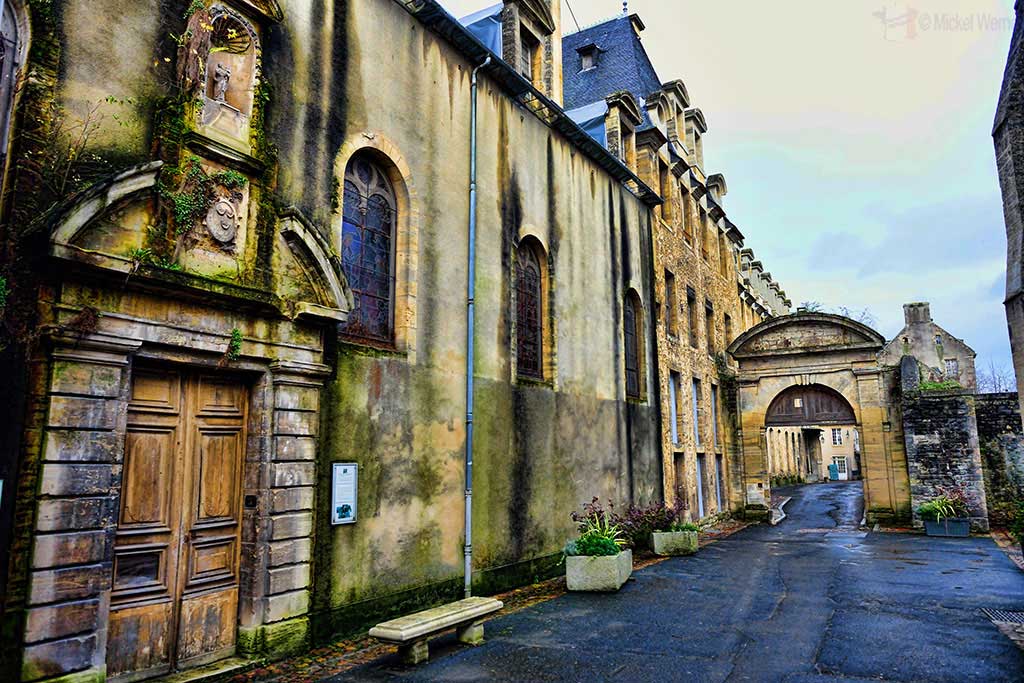
The tapestry museum is located in the former seminary (where they trained priests) and these buildings are all part of the former religious complex with several of the buildings used to accommodate the priests and for their classes.

The museum itself is part of the former seminary built in the 17th century. The above photo shows the entrance.
The museum, apart from a temporary exhibit upstairs, has only one item: the tapestry.
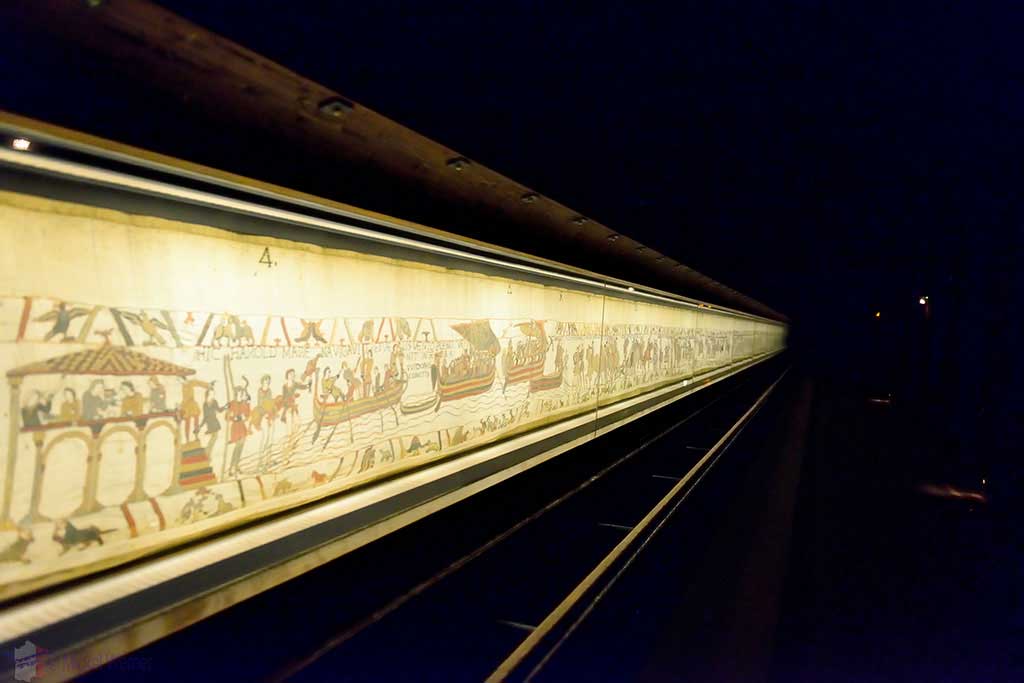
The tapestry is 1000 years old (made in the year 1066) and depicts the history of the invasion of England by the Normands. More about the museum and its tapestry, click here.
But needless to say, it’s pretty impressive. The exhibit upstairs is not bad either as you’ll see in the upcoming article.
Next to the tapestry museum are a couple of older, less well maintained buildings:

These buildings form part of a hospital complex (that has seen better days):
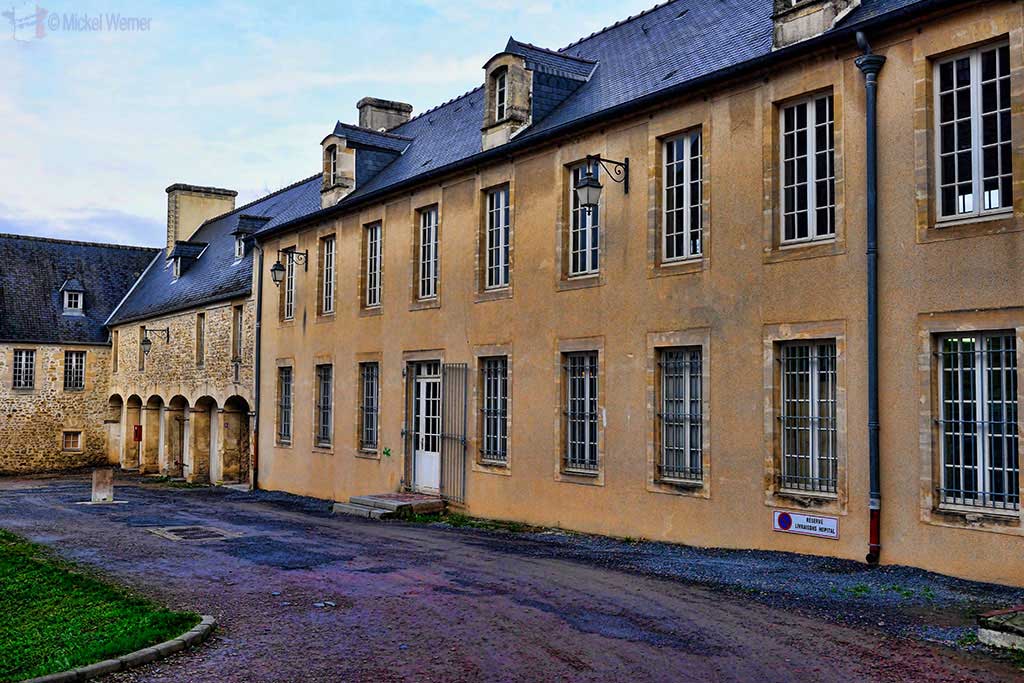
You’d expect some nuns to come out while hearing the screaming of the patients. It looks the way the hospitals were a hundred years ago or so (but maybe they are extremely well done inside, from the outside it looks like something you’d give a miss apart for dire emergencies).
A little further we discovered this small enclave:
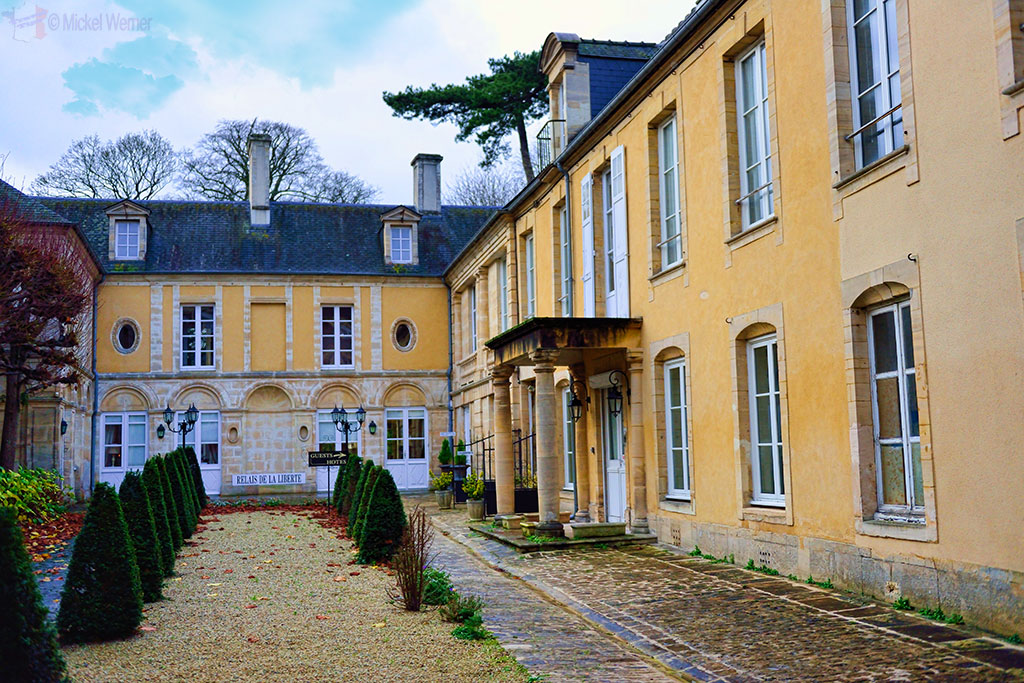
This is a very nice guesthouse, so not really a hotel. It’s an 18th century house that was located inside the park of the famous botanist Moisson de Vaux. Click here to see more about this elegant “guesthouse”.
Right next to the Hotel Tardif is the Notre-Dame cathedral of Bayeux:
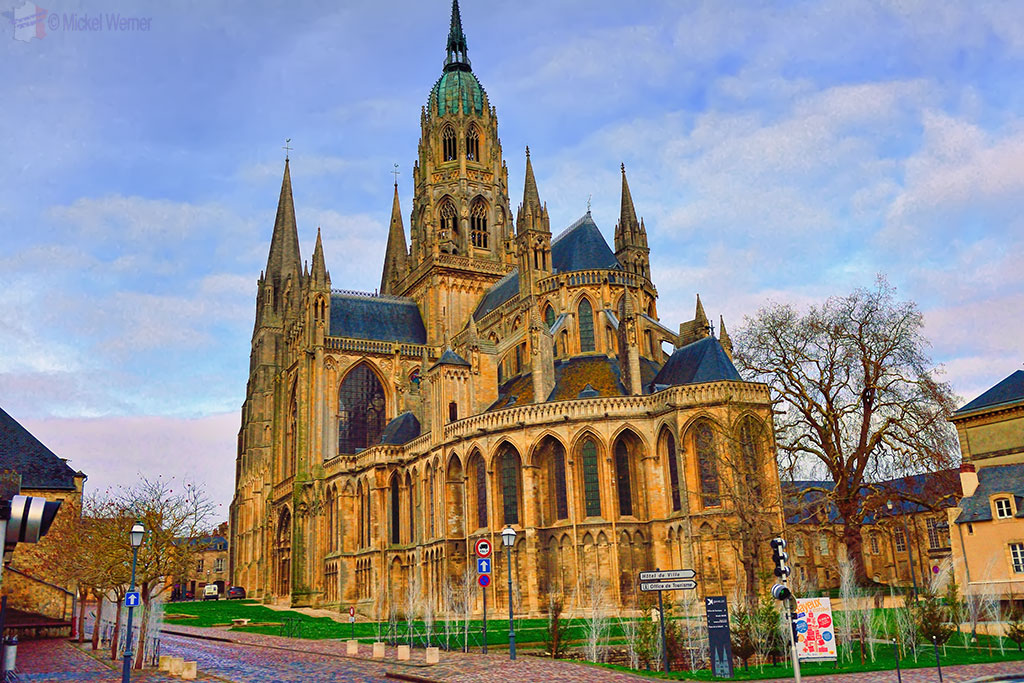
Built in 1077, the cathedral is imposing and takes the centre stage of Bayeux. Click here to read more about this cathedral.
The City Centre
The city centre feels and looks quite old. Everywhere you look, you’ll see buildings made centuries ago, and most of them have been well maintained.
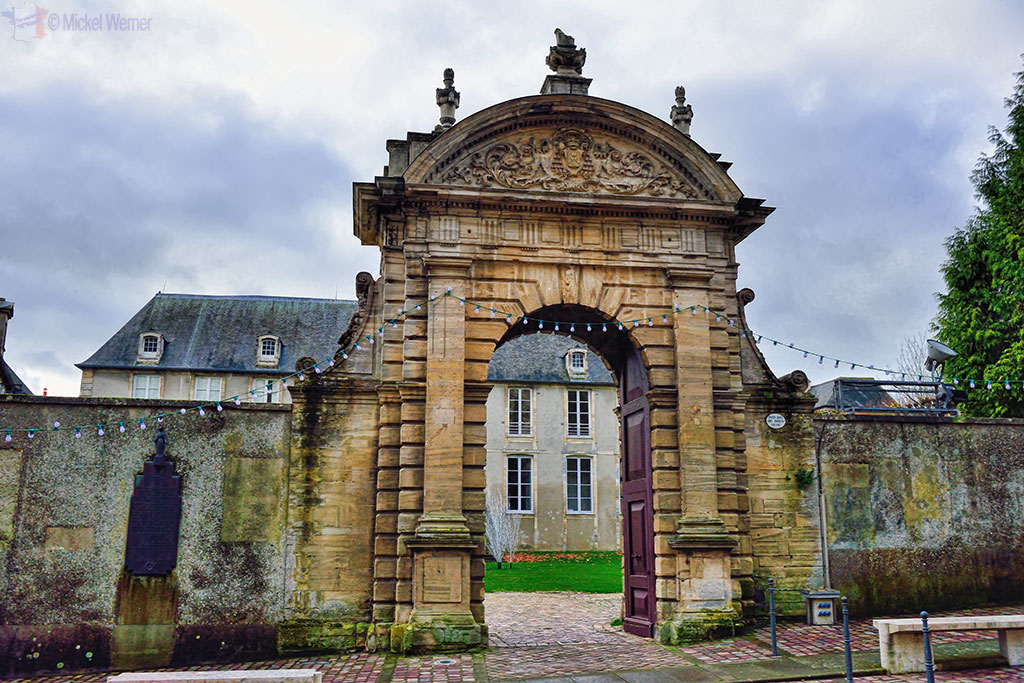
Most streets in Bayeux are made out of cobblestones.

Fortunately, the the cobblestone streets are well maintained and level, so wheelchairs should be able to take these easily.

The city centre is a mix of very old buildings, some dating back to the Middle Ages, and some more recent ones (meaning 18th/19th century).
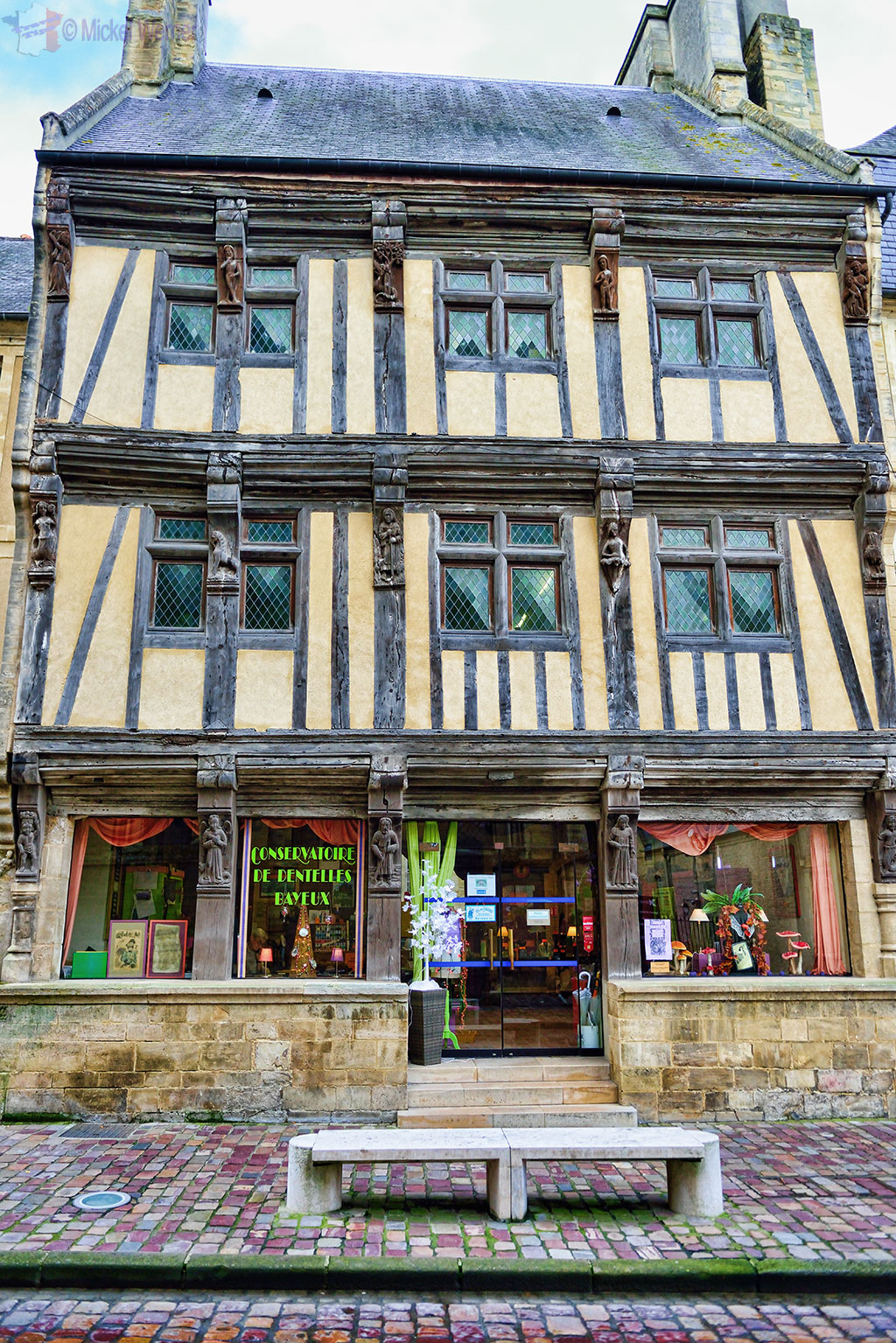
Some of the houses have retained the original Normandy-style structure: timber and stone. The photo above is what most city houses used to look like in Normandy. Here is another example:

Here is another one but more dramatic
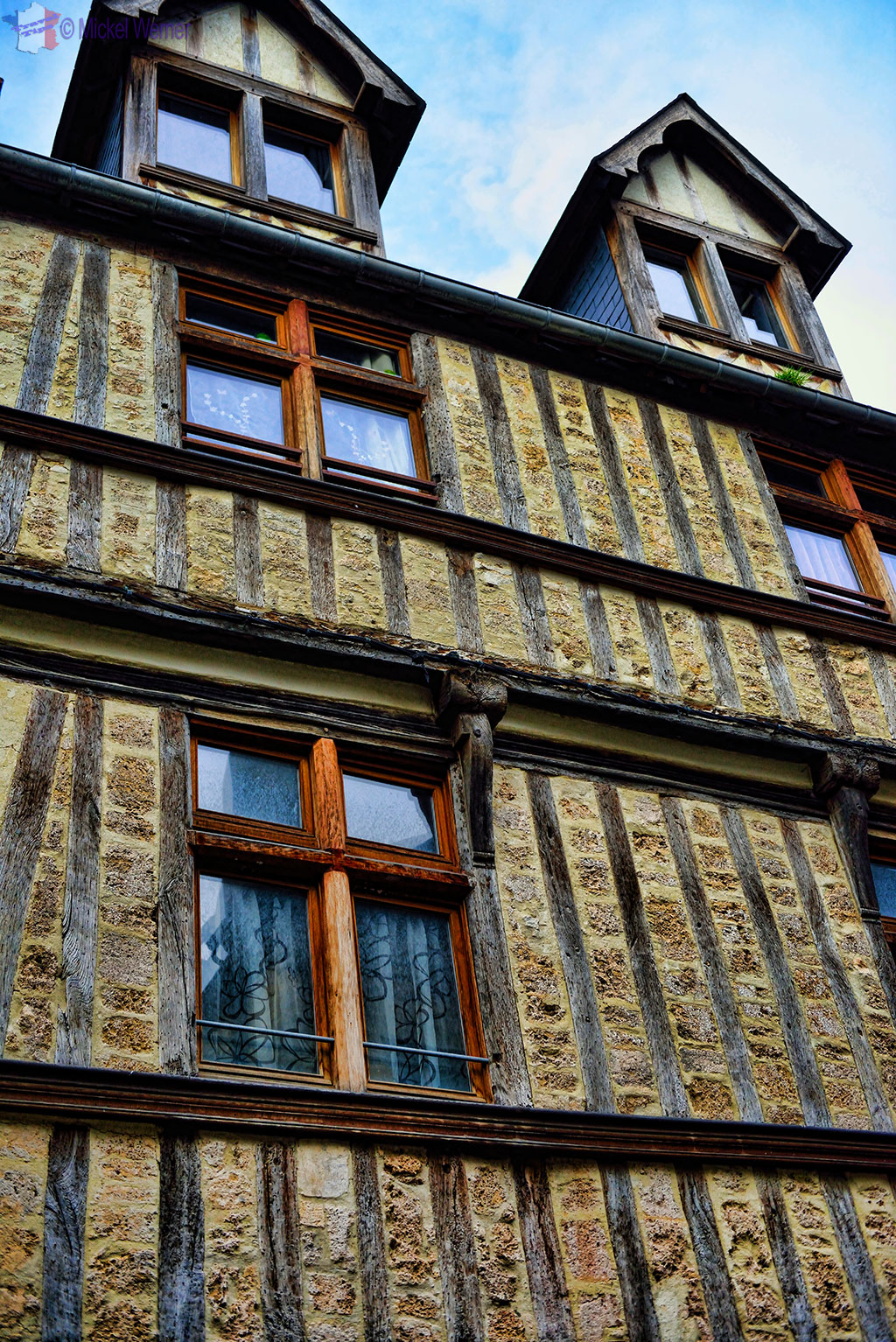
But the most imposing and old-style Normandy house is to be found on the shopping street Rue Saint Martin.
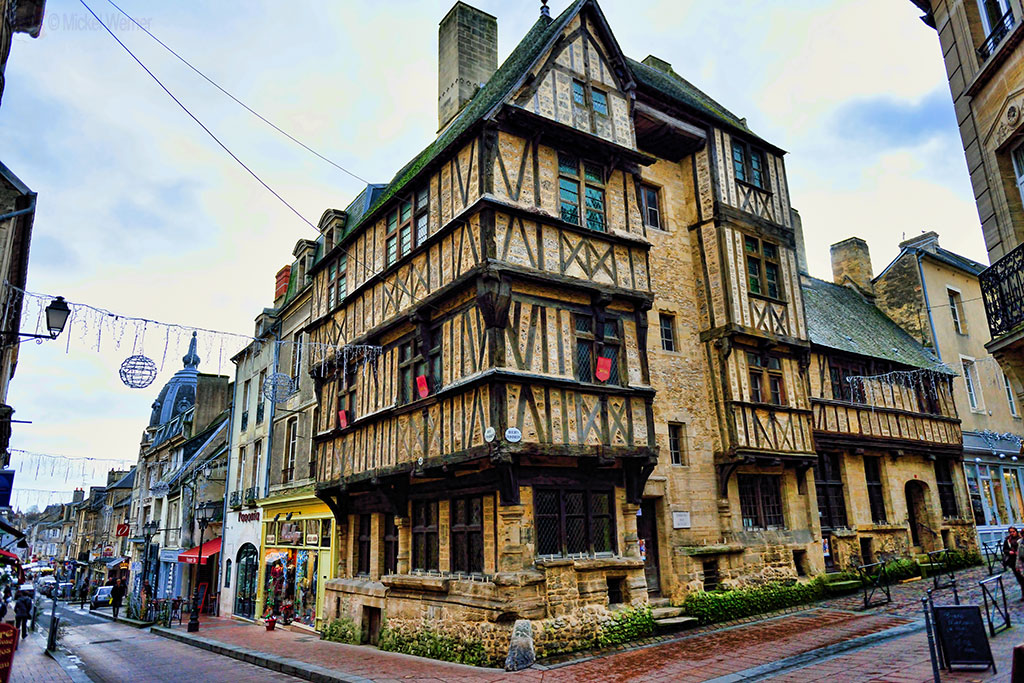
This is one of some 70 houses built in the 14th century that are still standing. It is the oldest timber-based house in Bayeux and currently used by a charity association.
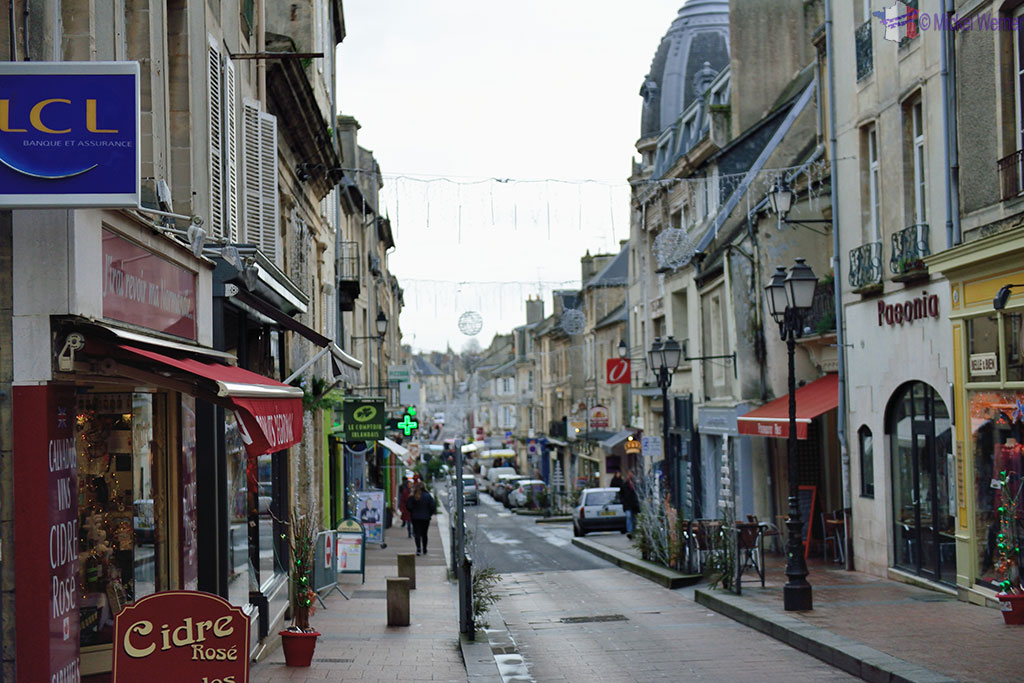
The shopping streets in Bayeux are nothing to write home about. Some are not pedestrianised, and as a whole doesn’t bring anything to the city in terms of architecture.
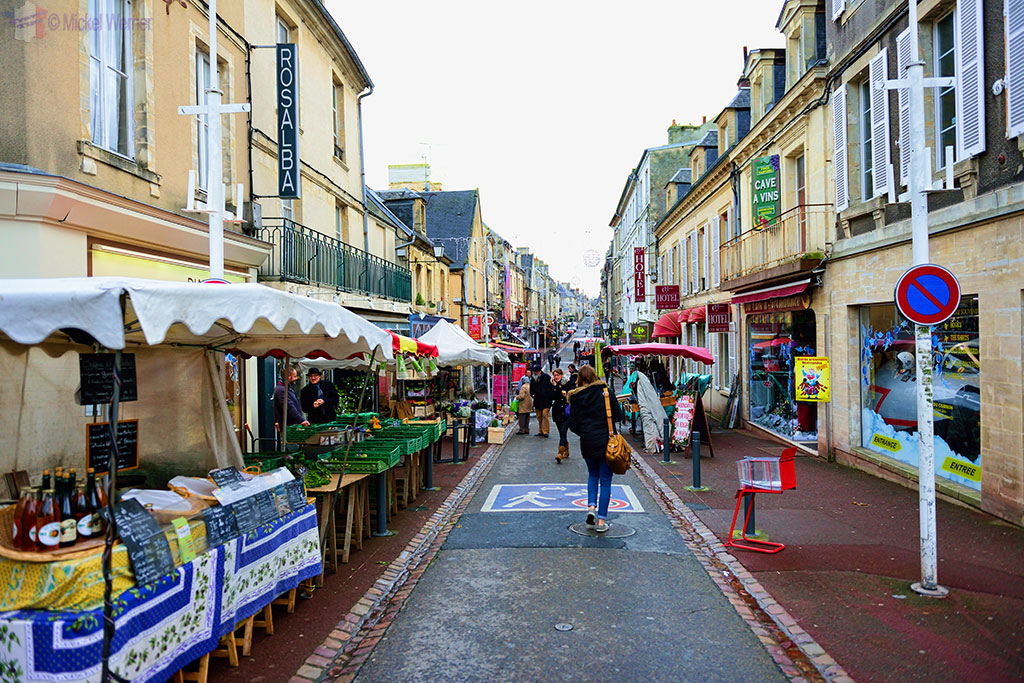
Semi-pedestrian shopping street. It’s away from these shopping streets that you will find many interesting streets and alleys:
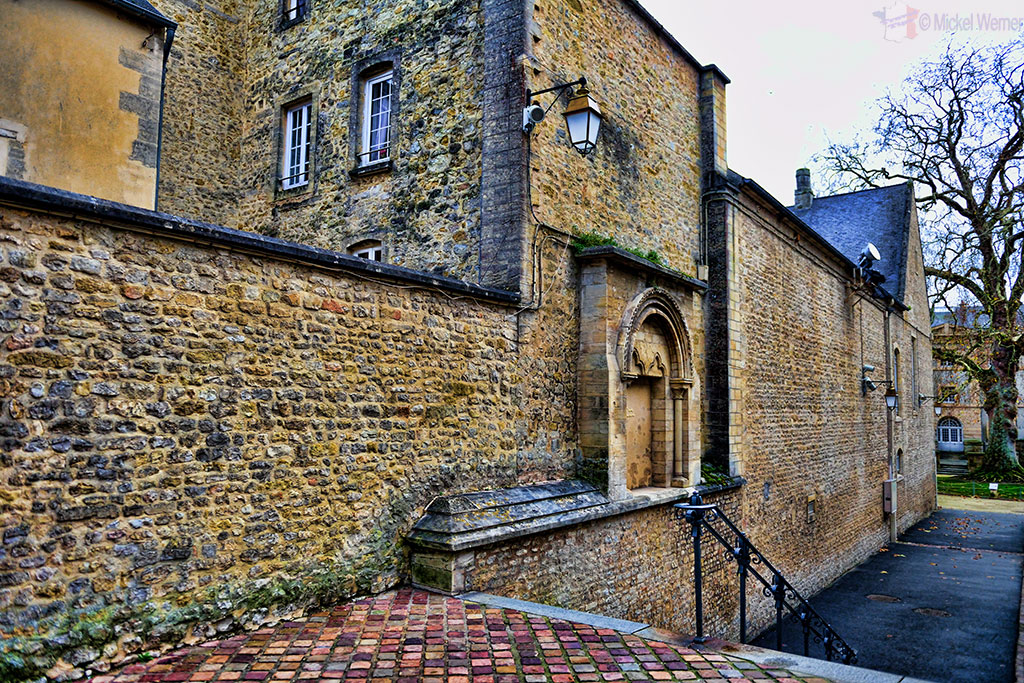
Walking through the city centre, away from the shops is most interesting. Particularly the Aure river that runs through the city makes for some scenic moments;
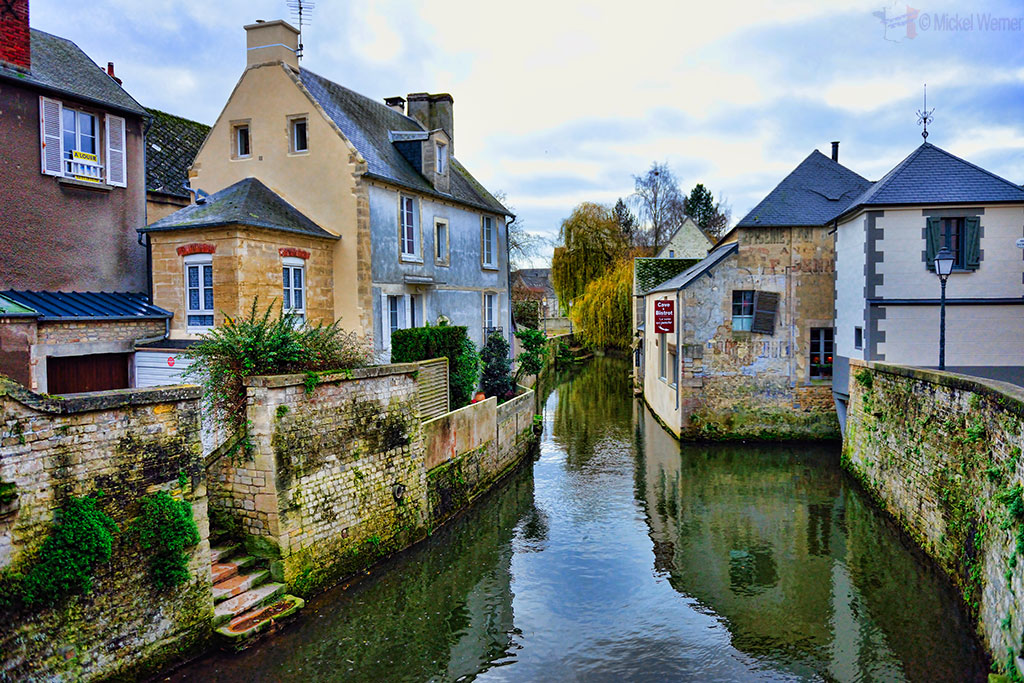
The Aure river and its many older buildings snakes through the city centre.

This is a bridge close to the Tourist Office over the Aure river.
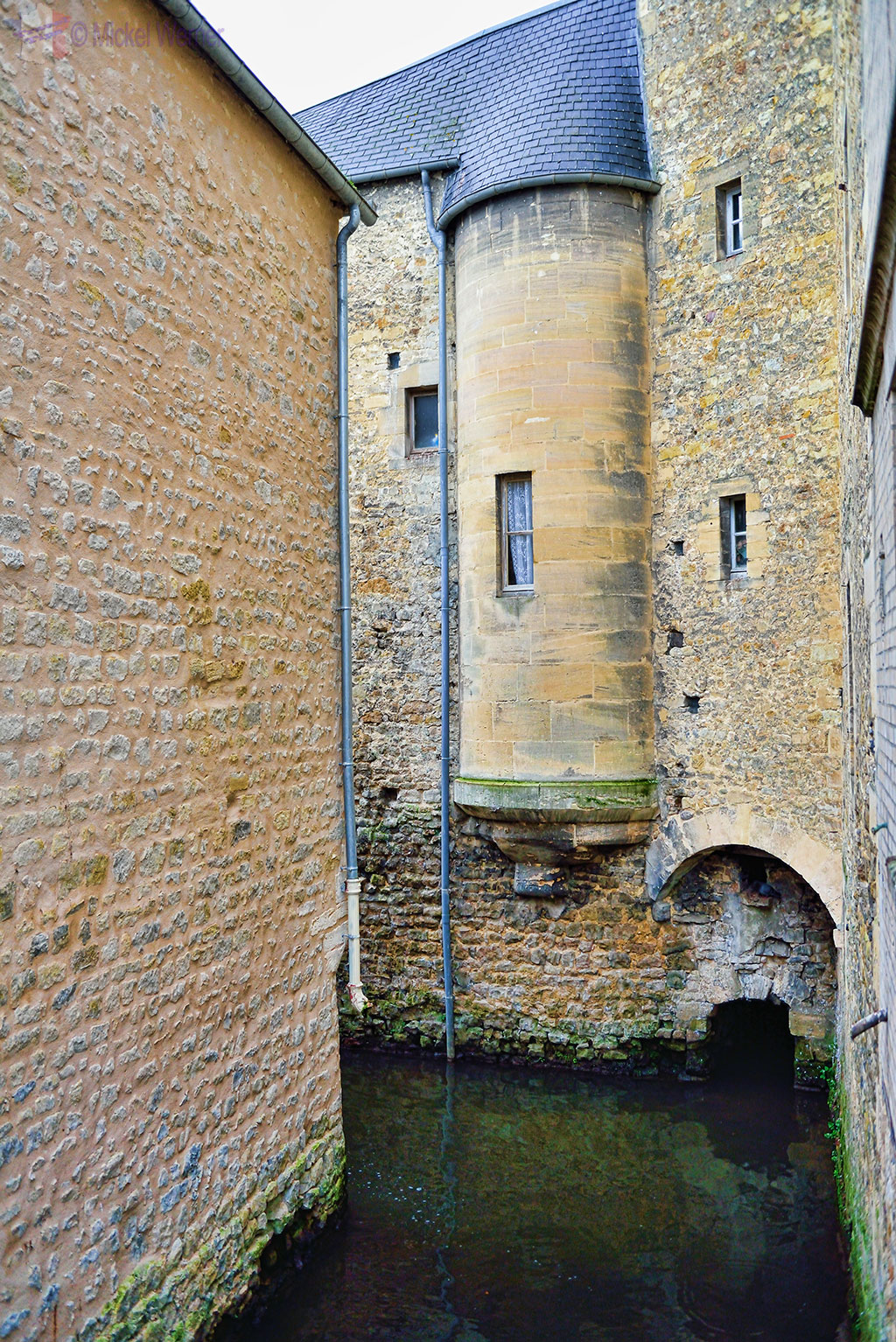
You will even find turrets in the older houses overhanging the river Aure.
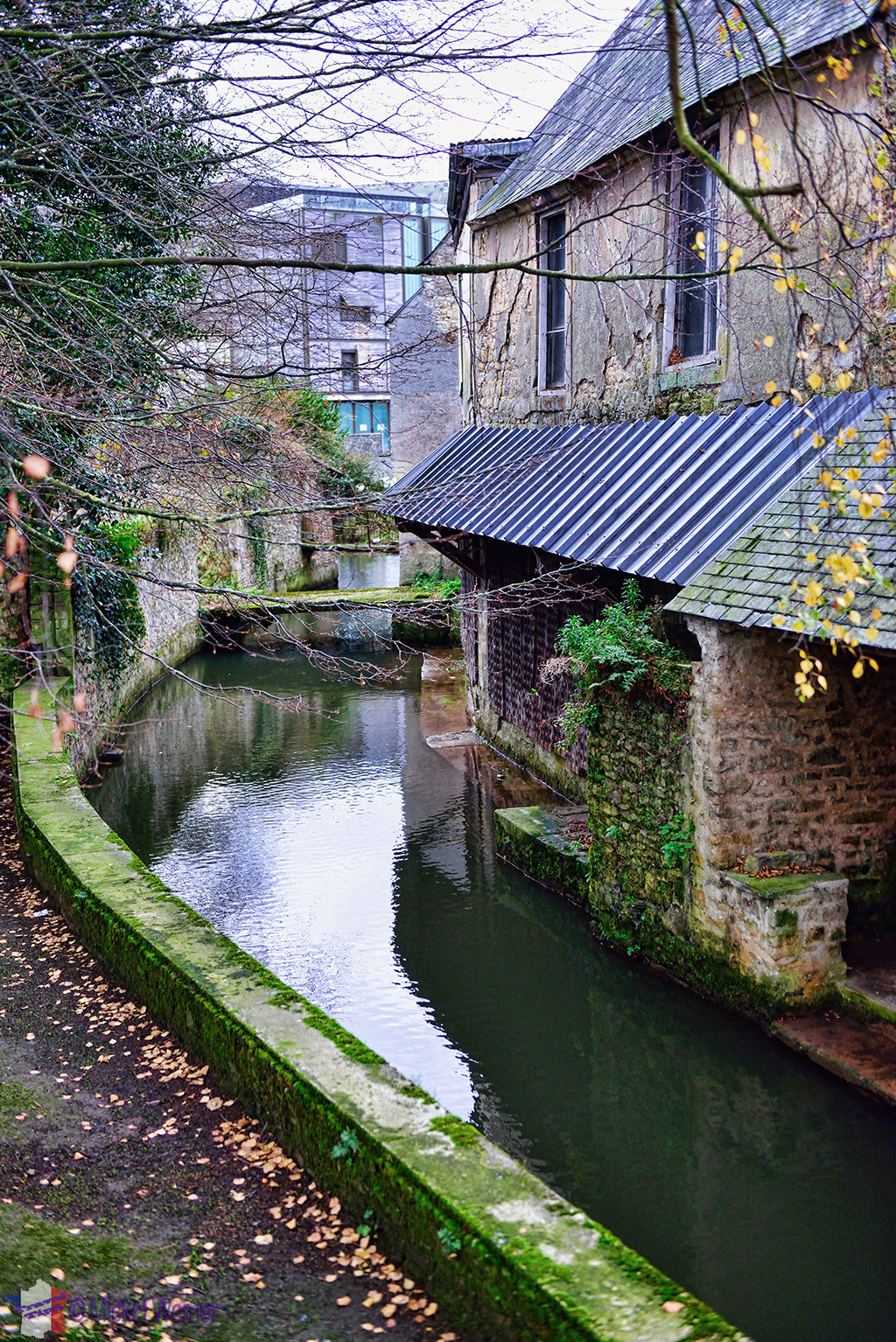
There are organised walking tours along the Aure river, over a distance of 4 kilometres. Check at the Tourist Office for times.

The City Hall (in French “Mairie”) is the former episcopal palace (where the bishop lived). It forms part of the Cathedral, seminary (now the tapestry museum) and hospital. All is joined by passageways.
Signs of religion are found everywhere:

On many corners or parks you will find religious statues:

Some 700 meter from the cathedral and city centre you will find an important area dedicated to the World War II history. First of all, there’s a rather large museum:
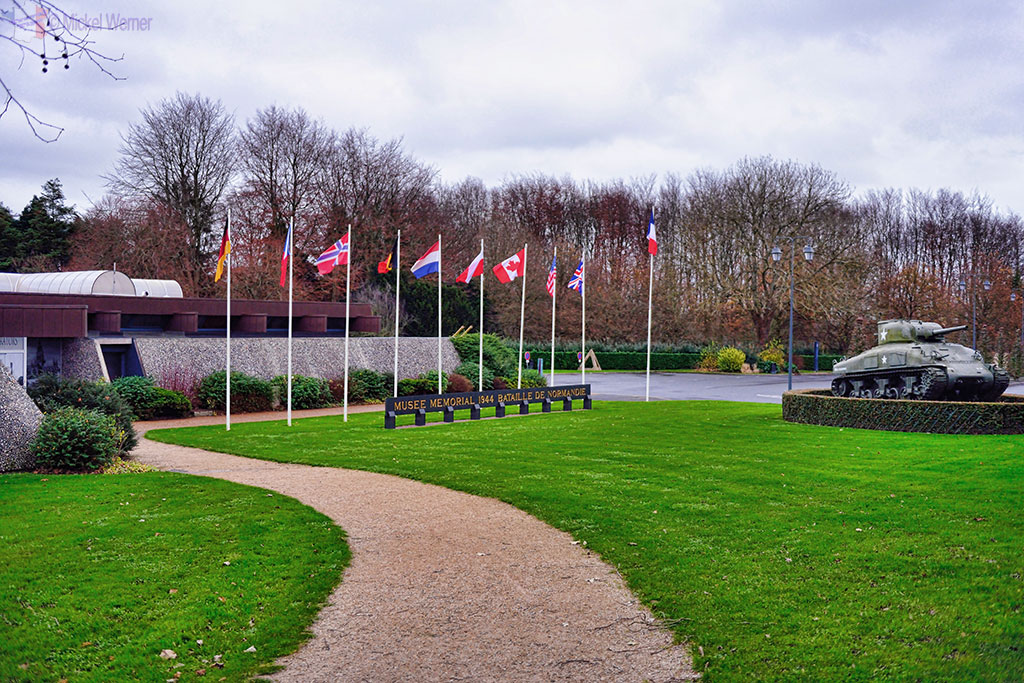
It is the memorial museum of the Battle of Normandy (D-Day and beyond).

The museum is rather large and well displayed. It takes you through the preparations of D-Day and the immediate battles afterwards.
Next to the museum you will find a different kind of memorial:

This is the memorial for reporters/journalists that have been killed while covering the news. It’s organised by “Reporters Without Borders” and covers fallen journalists from the 2nd World War up to today.
Click here to read more about the Reporters Memorial and see many more photos.
And finally, an important part of the WWII history:

This is the British War Cemetery where 4648 (Mostly British and Commonwealth, but also German and other nationalities) soldiers are laid to rest. It’s the biggest British WWII cemetery in France.
Click here to see more about the British War Cemetery.
Bayeux and the Artists
Artists featured on our site who painted in Bayeux (but not limited to) are (a “*” indicates that the artist did not work directly in Bayeux, instead worked in a nearby town):
- 🇺🇸 Boggs, Frank Myers * ⇠
- 🇬🇧 Boys, Thomas Shotter ⇠
- 🇬🇧 Burgess Jr, John ⇠
- 🇬🇧 Childers, Milly * ⇠
- 🇬🇧 Cotman, John Sell ⇠
- 🇫🇷 Dufy, Raoul * ⇠
- 🇫🇷 Letellier, Emile-Andre ⇠
- 🇫🇷 Seurat, Georges * ⇠
- 🇫🇷 Signac, Paul * ⇠
- 🇫🇷 Thorigny, Felix ⇠
- 🇫🇷 Valtat, Louis * ⇠
Summary
Bayeux, as stated in the introduction, is strange. On one side I often asked myself what I was doing there, but then I would discover some marvel. You’ll be walking through the city trying to figure out what there is to see, and then stumble upon a jewel. Strange.
The tapestry is definitely worth a visit if you are in the neighbourhood, and the WWII memorials should be on the agenda.
Related Posts
- 10000
- 10000
- 10000
- 10000
- 10000
 Transport Getting There Ferry: The closest ferry harbours to and from the UK are Cherbourg, Caen/Ouistreham and Le Havre. Air: The international airport for Caen (click here to access the airport's web site) is very close-by with regular flights to the UK. Within Bayeux There is no useable bus service, but you don’t…
Transport Getting There Ferry: The closest ferry harbours to and from the UK are Cherbourg, Caen/Ouistreham and Le Havre. Air: The international airport for Caen (click here to access the airport's web site) is very close-by with regular flights to the UK. Within Bayeux There is no useable bus service, but you don’t…




